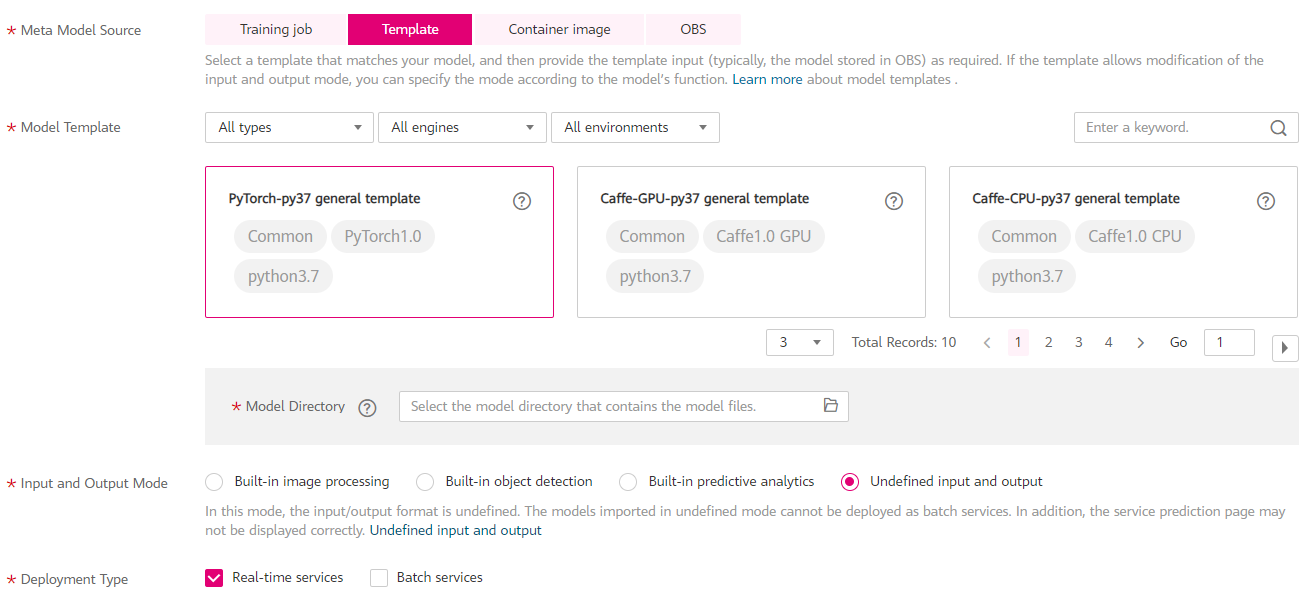Introduction to Model Templates¶
Because the configurations of models with the same functions are similar, ModelArts integrates the configurations of such models into a common template. By using this template, you can easily and quickly import models and create AI applications without compiling the config.json configuration file. In simple terms, a template integrates AI engine and model configurations. Each template corresponds to a specific AI engine and inference mode. With the templates, you can quickly import models to ModelArts and create AI applications.
Using a Template¶
Upload the model package to OBS before using the template. Store the model files in the model directory. When creating an AI application using this template, you need to select the model directory. For details, see Importing a Meta Model from a Template.
On the Create page, set Meta Model Source to Template.
In the Model Template area, select a common template.
ModelArts also provides three filter criteria: Type, Engine, and Environment, helping you quickly find the desired template. If the three filter criteria cannot meet your requirements, you can enter keywords to search for the target template.

Figure 1 Selecting a template¶
For Model Folder, select the model directory where the model files reside. For details, see Templates.
Note
If a training job is executed for multiple times, different version directories are generated, such as V001 and V002, and the generated models are stored in the model folder in different version directories. When selecting model files, specify the model folder in the corresponding version directory.
If the default input and output mode of the selected template can be overwritten, you can select an input and output mode based on the model function or application scenario. Input and Output Mode is an abstract of the API in config.json. It describes the interface provided by the model for external inference. An input and output mode describes one or more APIs, and corresponds to a template.
For details about the supported input and output modes, see Input and Output Modes.